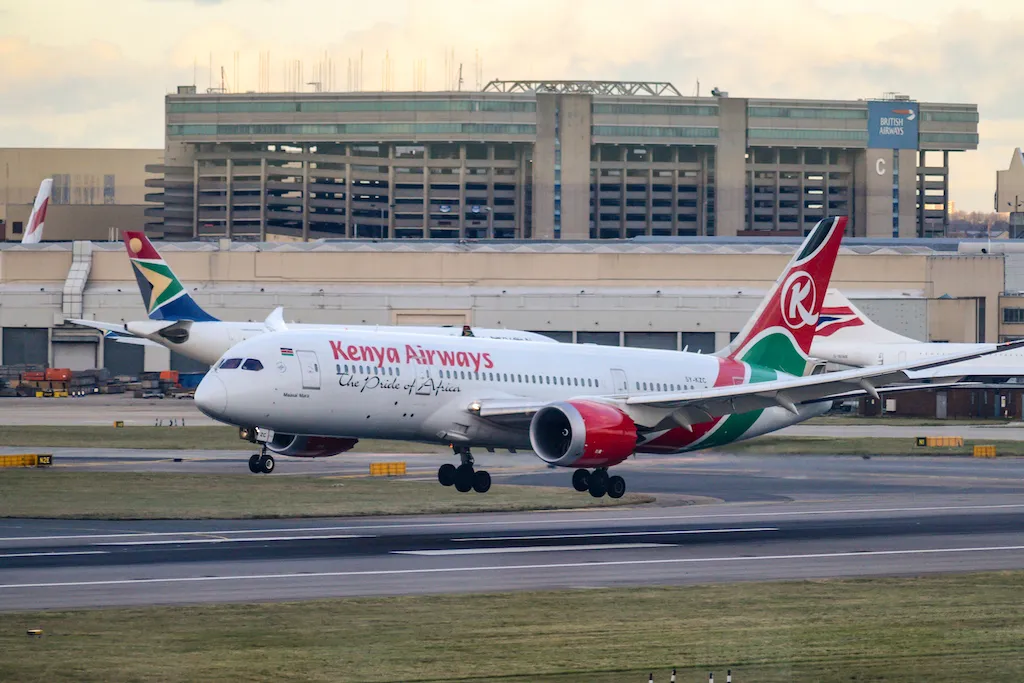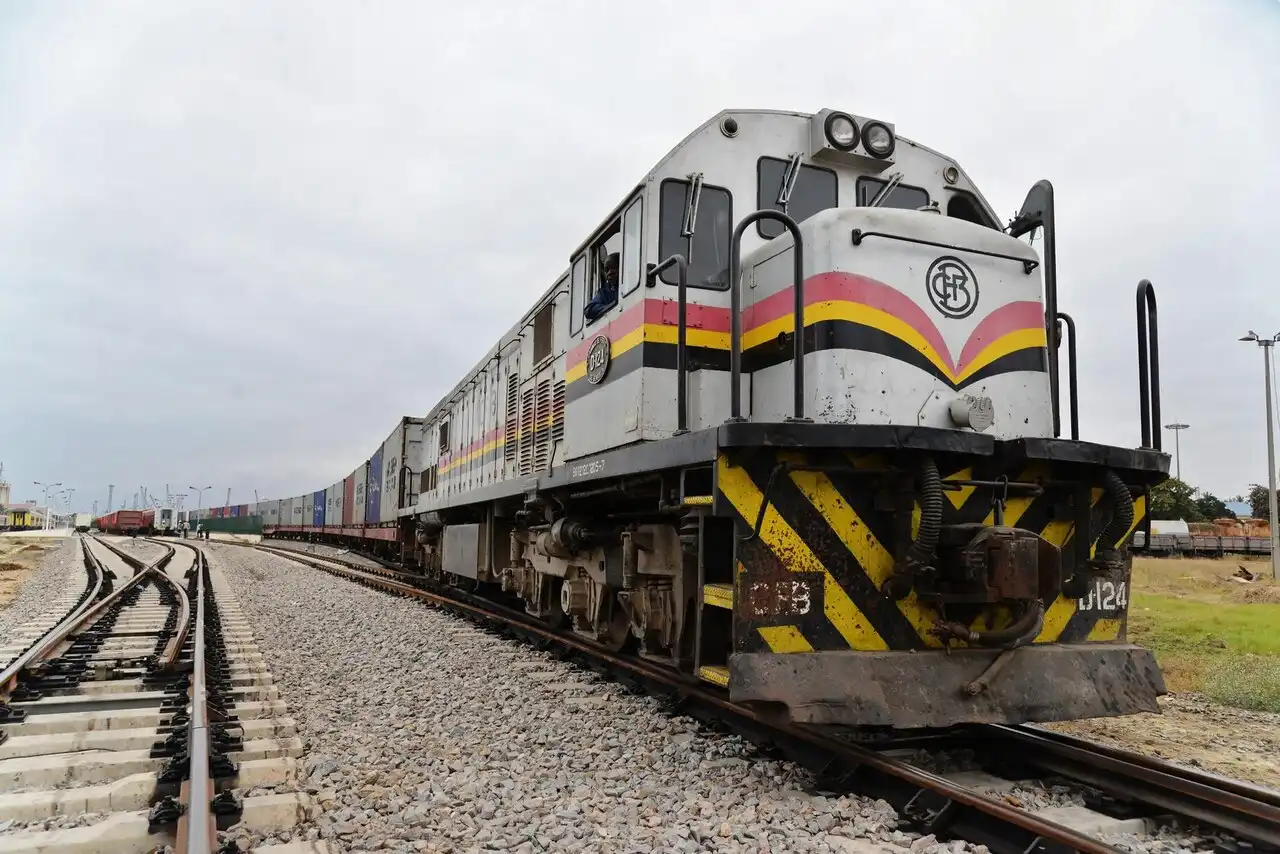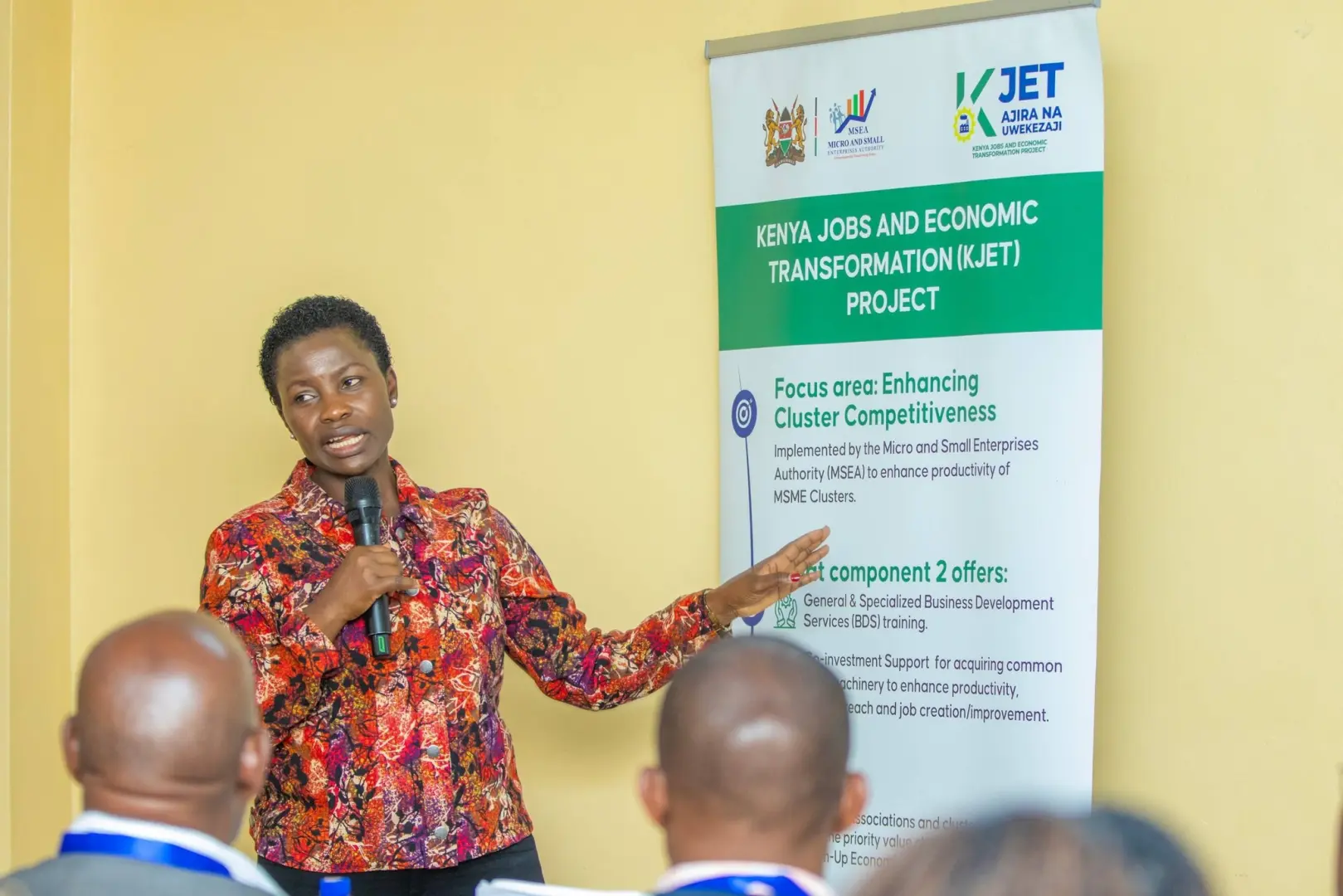Kenya Airways delivered a devastating blow to shareholders on Wednesday as its stock became the biggest loser at the Nairobi Securities Exchange (NSE), shedding 19.18 percent of its market value following the announcement of a crippling Sh12.15 billion half-year net loss. The dramatic collapse in share price came just a day after the national carrier revealed it had plummeted back into loss-making territory in the first six months of 2025, marking a stunning reversal from its historic profitability achieved in 2024.
Build the future you deserve. Get started with our top-tier Online courses: ACCA, HESI A2, ATI TEAS 7, HESI EXIT, NCLEX-RN, NCLEX-PN, and Financial Literacy. Let Serrari Ed guide your path to success. Enroll today.
Market Carnage as Investors Flee
The Kenya Airways share price opened with heavy selling pressure, touching a day’s low of Sh1.56 per share—the lowest level since trading resumed at the NSE following a lengthy suspension. At market close, KQ shares settled at an average of Sh4.00 per share, representing a catastrophic 19.18 percent drop from Tuesday’s closing price of Sh4.99 per share.
The share price collapse erased significant value for investors who had witnessed the stock soar to heights of Sh9.18 per share over the past year during the carrier’s brief renaissance period. The dramatic fall underscores the volatile nature of airline investments and the market’s harsh judgment of operational failures.
According to market data, Kenya Airways currently ranks as the 14th most valuable stock on the NSE with a market capitalization that has now fallen to approximately KSh27.2 billion, representing just 1.07% of the NSE equity market. The counter has gained an estimated 24% since it resumed trading at the NSE after a near 5-year freeze, but recent poor performance has seen it lose 10% of its value in the past four weeks alone.
From Hero to Zero: A Dramatic Financial Reversal
The magnitude of Kenya Airways’ financial reversal is nothing short of spectacular. The Sh12.15 billion net loss represents a seismic shift from the record profit of Sh5.4 billion that the national carrier posted in the full year 2024—the highest in the airline’s history. Even more striking is the comparison to the first half of 2024, when KQ reported a modest but positive net profit of Sh513 million.
This dramatic swing from profitability to massive losses within just six months highlights the precarious nature of airline operations and the devastating impact that operational disruptions can have on financial performance. The airline’s total income for the first half of 2025 plummeted by 18.6 percent to Sh74.5 billion, down from Sh91.5 billion in the same period last year.
The financial metrics paint a grim picture across the board. Operating losses ballooned to Sh6.2 billion from an operating profit of Sh1.3 billion in the first half of 2024. Cash and equivalents declined by 10.8 percent to Sh4.2 billion, while net cash from operations fell by 2.6 percent to Sh7.7 billion. The only positive metric was a marginal 0.7 percent increase in assets to Sh180.4 billion, providing little comfort to stakeholders grappling with the operational crisis.
Boeing 787 Dreamliner Crisis: The Root of All Evil
At the heart of Kenya Airways’ financial catastrophe lies a perfect storm of aircraft groundings that has crippled the carrier’s ability to generate revenue. Chief Executive Officer Allan Kilavuka revealed that an unprecedented 33 percent of the airline’s wide-body aircraft fleet was grounded for the first six months of 2025, creating a capacity crisis that reverberated throughout the network.
The grounding primarily affected three Boeing 787-8 Dreamliners, which represent a critical component of Kenya Airways’ long-haul operations. These aircraft, which serve key international routes including London Heathrow, Paris Charles de Gaulle, New York JFK, and Bangkok, were pulled from service due to engine maintenance complications and global supply chain disruptions.
According to fleet data, Kenya Airways operates nine Boeing 787-8 Dreamliners powered by GEnx-1B70 engines, with the series averaging 10.5 years of age. The grounded aircraft include 5Y-KZA (named ‘The Great Rift Valley’), 5Y-KZC, and 5Y-KZH, all parked in Nairobi as the airline struggles to secure necessary spare engines and components.
The impact of these groundings cannot be overstated. The airline experienced a 14 percent drop in passenger numbers and a devastating 19 percent decline in Revenue Passenger Kilometres (RPKs). Kilavuka explained that the grounding compromised the airline’s revenue by approximately Sh17 billion, directly translating to the reported loss.
Global Industry Crisis: Kenya Airways Not Alone
Kenya Airways’ Boeing 787 troubles are part of a broader industry-wide crisis affecting Dreamliner operators globally. The airline industry has been grappling with unprecedented maintenance delays and spare parts shortages that have extended routine maintenance periods far beyond normal schedules.
Vietnam Airlines, for example, has reported that engines meant to be away for 90 days for maintenance have had their stays extended to over 120 days due to supply chain constraints. British Airways has been forced to cancel route launches and cut services to international markets due to reliability concerns with its Dreamliners, while Air New Zealand has also grounded 787s in response to similar engine woes.
The crisis stems from COVID-19’s impact on global supply chains, affecting both General Electric (which powers Kenya Airways’ 787s with GEnx engines) and Rolls-Royce (which powers other airlines’ 787s with Trent 1000 engines). The shortage of spare parts and extended maintenance periods have created a bottleneck that continues to plague airlines worldwide.
Kenya Airways Chief Operations Officer George Kamal had explained earlier that typical engine overhauls, required every five years or after 3,000 flight cycles, usually take 70 to 90 days but have stretched to 120 days due to increased global demand for overhaul services. “We have booked slots at General Electric Aerospace. However, the turnaround times, which increased significantly due to the supply chain, has really hurt all the airlines including Kenya Airways,” Kamal stated.
A History of Operational Disruptions
This is not Kenya Airways’ first encounter with aircraft grounding issues. In May 2024, the airline blamed similar disruptions caused by grounded Dreamliners for flight schedule disruptions. The recurring nature of these problems highlights systemic challenges in fleet management and maintenance planning that have plagued the carrier.
The airline has been forced to repeatedly readjust its network and schedules, downgrading some flights and implementing widespread service reductions to minimize disruption. These constant operational changes have not only impacted revenue but have also eroded customer confidence and loyalty—critical factors for any airline’s long-term success.
Incidentally, Kenya Airways had been experiencing operational pressures even before the current crisis. As Bizna Kenya reported in July 2025, the airline was already anticipating reduced revenues for the year following earlier aircraft groundings. Kilavuka had warned that losing 20 percent of capacity would significantly affect results, particularly for a relatively small airline like Kenya Airways where every aircraft plays a crucial role in network connectivity.
Ready to level up your career? Join our expert-led Online courses in ACCA, HESI A2, ATI TEAS 7, HESI EXIT, NCLEX-RN, NCLEX-PN, and Financial Literacy. At Serrari Ed, we turn potential into achievement. Start your journey today!
Complex Ownership Structure and Financial Challenges
Kenya Airways’ current crisis unfolds against the backdrop of a complex ownership structure resulting from multiple debt restructuring exercises. Following the 2017 debt-for-equity swap, the Kenyan government became the dominant shareholder with a 48.9% stake, up from the previous 29.8%.
A consortium of 11 local banks, operating through KQ Lenders Company 2017 Ltd, holds 38.1% of the airline following their agreement to convert loans worth Sh22.5 billion into equity. These banks include major Kenyan financial institutions such as Equity Bank, KCB Group, Cooperative Bank, Commercial Bank of Africa, I&M Bank, NIC Bank, Ecobank, and others.
KLM’s shareholding was significantly diluted from 26.7% to just 7.8% following the restructuring, while employees and other minority shareholders hold the remaining 5.2%. This ownership structure places significant pressure on the government and local banks, who are now bearing the brunt of the airline’s financial performance.
The International Monetary Fund (IMF) disclosed that the Kenyan government is taking over $827 million of airline debt and providing $473 million as direct budgetary support over the next two years to help clear overdue payments and cover restructuring costs. This government support comes at a time when public finances are under pressure from various economic challenges.
Failed Nationalization Plans and Strategic Uncertainty
Kenya Airways’ troubles have been compounded by strategic uncertainty surrounding various nationalization proposals that have failed to materialize. The government previously attempted to introduce the National Aviation Management Bill, proposing to merge Kenya Airways with Kenya Airports Authority (KAA) and the Aviation Investment Corporation into a holding company called Kenya Aviation Corporation.
However, the proposal faced significant resistance from economists, lawyers, and the Law Society of Kenya, who questioned the logic of allowing debt-heavy Kenya Airways—then holding KSh220 billion in liabilities—to potentially burden the profitable KAA. The bill ultimately failed to pass, leaving the airline’s long-term strategic direction unclear.
The failed nationalization attempts have created additional uncertainty for investors and stakeholders, particularly given that various government officials had previously indicated intentions to take full control of the carrier. This policy uncertainty has contributed to the volatile performance of KQ shares on the securities exchange.
Fleet Expansion Plans Amid Crisis
Despite the current operational crisis, Kenya Airways has been working to expand its fleet capacity. The airline managed to add one Boeing 737-800 aircraft during the first half of 2025, bringing its total fleet count to 42 aircraft. However, Kilavuka revealed that the airline had originally planned to add four narrow-body aircraft during the year but was only able to secure one due to global aircraft shortages.
“This year, we expected to onboard four narrow bodies but have only managed to do one, a Boeing 737-800, due to a shortage in the global market,” Kilavuka explained. The global shortage of aircraft, combined with extended maintenance periods for existing planes, has created a perfect storm for airlines trying to maintain adequate capacity.
The airline’s fleet ownership costs increased by 29% during the first half of 2025, following asset remeasurement of leased assets and the addition of the new Boeing 737 aircraft. This increase in ownership costs, combined with reduced revenue from grounded aircraft, has significantly impacted the airline’s financial performance.
Recovery Efforts and Management Response
Kenya Airways management has expressed confidence in the airline’s ability to recover from its current challenges. One of the three grounded Dreamliners returned to service in July 2025, with the remaining two expected to rejoin the fleet later in the year. Kilavuka noted that strong passenger demand on international routes continues to underpin the airline’s recovery potential.
“The first half of 2025 was defined by industry-wide challenges that directly impacted our performance, particularly the grounding of three of our aircraft,” Kilavuka stated. “While the financial results reflect these headwinds, we have taken decisive actions to stabilize operations and protect the long-term resilience of Kenya Airways.”
The airline is pursuing various operational efficiencies to cushion against inflation and fuel price volatility while positioning itself as a key driver of connectivity and trade across Africa. According to the International Air Transport Association (IATA), global passenger traffic is projected to grow by 5.8% in 2025, providing some optimism for the recovery outlook.
Historical Context: From Privatization Success to Crisis
Kenya Airways’ current crisis stands in stark contrast to its historical success story following privatization in 1996. Originally founded in 1977 as a government-owned entity after the collapse of the East Africa Community, KQ became the first African airline to be privatized.
The privatization resulted in remarkable transformation, with the airline recording 61% growth in flights within six years and doubling cargo and passenger traffic within a decade. The airline maintained profitability from privatization through 2012, demonstrating the potential for private sector efficiency in airline operations.
However, the ambitious Project Mawingu expansion plan, launched in 2009 with a budget of $3 billion, proved to be the airline’s undoing. The plan aimed to increase destinations from 53 to 115 and was primarily funded through debt. When several assumptions underlying the expansion proved incorrect—including projected economic growth rates and industry profitability—the airline found itself overleveraged and struggling to service its debt obligations.
The situation was further exacerbated by a costly fuel hedging miscalculation in 2015, which contributed to a staggering loss of KSh25.74 billion that year. While hedging is common industry practice to stabilize fuel costs, Kenya Airways locked in prices just before global oil prices plummeted, leaving the airline paying expensive contracts while competitors purchased fuel at lower spot rates.
Regional Competition and Strategic Challenges
Kenya Airways’ struggles become more pronounced when compared to regional competitor Ethiopian Airlines, which has maintained strong growth and profitability. While both airlines were on par around 2005, Ethiopian Airlines has since established itself as Africa’s largest and most profitable airline, while Kenya Airways has struggled to survive operationally and financially.
The competitive landscape in East Africa has intensified with the growth of Gulf carriers like Emirates, Qatar Airways, and Etihad, which have captured significant market share on routes between Africa and Europe/Asia. These carriers benefit from modern fleets, extensive route networks, and strong home-country support, making it challenging for Kenya Airways to compete effectively.
Furthermore, the rise of low-cost carriers in Africa has put pressure on Kenya Airways’ short-haul operations, while the airline’s high operational costs—including substantial payments to Kenya Airports Authority for landing fees, passenger service charges, and facility rents—have hindered profitability efforts.
Market Outlook and Investor Sentiment
The dramatic decline in Kenya Airways shares reflects broader investor skepticism about the airline’s ability to achieve sustainable profitability. Despite the brief return to profitability in 2024, the speed with which the airline has returned to significant losses raises questions about the durability of any turnaround efforts.
Peter Karunga, a market analyst, told investors that the nationalization plan continues to create uncertainty, with some hoping for a premium when the government potentially buys out minority shares. “Those who bought in April at below a shilling are merrymaking. They are likely to earn up to 12 times,” Karunga said, though the current losses may dampen such optimistic projections.
The suspension and subsequent resumption of trading at the NSE has created additional volatility, with investors uncertain about the airline’s long-term strategic direction. The complex ownership structure, with significant stakes held by both the government and local banks, creates potential conflicts of interest and governance challenges.
Future Challenges and Opportunities
Looking ahead, Kenya Airways faces several critical challenges that will determine its survival and eventual return to profitability. The airline must successfully complete the return of its grounded Dreamliners to service while implementing measures to prevent similar operational disruptions in the future.
The broader question of fleet modernization and expansion remains critical, particularly as the airline competes with well-funded regional and international competitors. The global shortage of aircraft and extended delivery times for new planes complicate fleet planning efforts.
Additionally, the airline must address its cost structure, including the high fees paid to Kenya Airports Authority and the elevated lease servicing costs that consume approximately 11% of revenue—double the worldwide average of 5%. Without significant cost reduction efforts, even operational improvements may prove insufficient to achieve sustainable profitability.
The ongoing global supply chain challenges affecting aircraft maintenance and spare parts availability present another persistent risk that could trigger similar crises in the future. Kenya Airways will need to develop more robust maintenance planning and spare parts management strategies to mitigate these risks.
Conclusion: A Critical Juncture
Kenya Airways finds itself at a critical juncture, with the dramatic share price decline reflecting market skepticism about the airline’s ability to overcome its operational and financial challenges. The Sh12.15 billion half-year loss serves as a stark reminder of the aviation industry’s inherent volatility and the critical importance of operational excellence.
While management expresses confidence in the recovery plan, the airline’s history of recurring crises and failed turnaround attempts suggests that achieving sustainable profitability will require more than just returning grounded aircraft to service. Fundamental structural changes in cost management, operational efficiency, and strategic direction may be necessary to restore investor confidence and ensure long-term viability.
For shareholders who have endured years of volatility and disappointing results, Wednesday’s 20% share price decline represents another painful reminder of the risks inherent in airline investments. Whether Kenya Airways can successfully navigate its current crisis and return to the profitability briefly achieved in 2024 remains an open question that will significantly impact the future of Kenya’s aviation sector.
Ready to take your career to the next level? Join our Online courses: ACCA, HESI A2, ATI TEAS 7 , HESI EXIT , NCLEX – RN and NCLEX – PN, Financial Literacy!🌟 Dive into a world of opportunities and empower yourself for success. Explore more at Serrari Ed and start your exciting journey today! ✨
Track GDP, Inflation and Central Bank rates for top African markets with Serrari’s comparator tool.
See today’s Treasury bonds and Money market funds movement across financial service providers in Kenya, using Serrari’s comparator tools.
photo source: Google
By: Montel Kamau
Serrari Financial Analyst
28th August, 2025
Article, Financial and News Disclaimer
The Value of a Financial Advisor
While this article offers valuable insights, it is essential to recognize that personal finance can be highly complex and unique to each individual. A financial advisor provides professional expertise and personalized guidance to help you make well-informed decisions tailored to your specific circumstances and goals.
Beyond offering knowledge, a financial advisor serves as a trusted partner to help you stay disciplined, avoid common pitfalls, and remain focused on your long-term objectives. Their perspective and experience can complement your own efforts, enhancing your financial well-being and ensuring a more confident approach to managing your finances.
Disclaimer: This article is for informational purposes only and does not constitute financial advice. Readers are encouraged to consult a licensed financial advisor to obtain guidance specific to their financial situation.
Article and News Disclaimer
The information provided on www.serrarigroup.com is for general informational purposes only. While we strive to keep the information up to date and accurate, we make no representations or warranties of any kind, express or implied, about the completeness, accuracy, reliability, suitability, or availability with respect to the website or the information, products, services, or related graphics contained on the website for any purpose. Any reliance you place on such information is therefore strictly at your own risk.
www.serrarigroup.com is not responsible for any errors or omissions, or for the results obtained from the use of this information. All information on the website is provided on an as-is basis, with no guarantee of completeness, accuracy, timeliness, or of the results obtained from the use of this information, and without warranty of any kind, express or implied, including but not limited to warranties of performance, merchantability, and fitness for a particular purpose.
In no event will www.serrarigroup.com be liable to you or anyone else for any decision made or action taken in reliance on the information provided on the website or for any consequential, special, or similar damages, even if advised of the possibility of such damages.
The articles, news, and information presented on www.serrarigroup.com reflect the opinions of the respective authors and contributors and do not necessarily represent the views of the website or its management. Any views or opinions expressed are solely those of the individual authors and do not represent the website's views or opinions as a whole.
The content on www.serrarigroup.com may include links to external websites, which are provided for convenience and informational purposes only. We have no control over the nature, content, and availability of those sites. The inclusion of any links does not necessarily imply a recommendation or endorsement of the views expressed within them.
Every effort is made to keep the website up and running smoothly. However, www.serrarigroup.com takes no responsibility for, and will not be liable for, the website being temporarily unavailable due to technical issues beyond our control.
Please note that laws, regulations, and information can change rapidly, and we advise you to conduct further research and seek professional advice when necessary.
By using www.serrarigroup.com, you agree to this disclaimer and its terms. If you do not agree with this disclaimer, please do not use the website.
www.serrarigroup.com, reserves the right to update, modify, or remove any part of this disclaimer without prior notice. It is your responsibility to review this disclaimer periodically for changes.
Serrari Group 2025
















